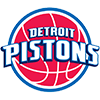Been a bit under the weather lately, so my apologies for missing last week's article. If anyone has any good tips on how to avoid getting sick, I'm all ears. I already spent about three figures on vitamins and plan to continue "safe" hand-washing, but beyond that, there's not much else I can do, right? Anyway, enough of that. This week I'm going to keep it simple and just write about a handful of things on my mind.
Jordan Lyles' Big-League Debut
Tuesday, Lyles became the youngest active major leaguer in the big leagues. At age 20, Lyles calmly went into Wrigley Field and tossed seven innings of two-run ball in a no-decision. He didn't walk a batter while striking out four, and the highlight for me had to be when he struck out Carlos Zambrano with a runner on third in the fifth inning, something that caused Big Z to go Big Z on his bat, snapping it like a twig over his knee. Lyles made one mistake on a throw to third base, but nothing really seemed to rattle this kid. He was in the 88-90 mph range with this fastball, which is his norm, so don't expect big strikeout totals, but command guys with his poise and secondary stuff (he can spot four pitches at will) can succeed. This is a ridiculous comparison of course, but Greg Maddux had a pretty good career with a similar skill-set. Drafted No. 38 overall out of high school in
Been a bit under the weather lately, so my apologies for missing last week's article. If anyone has any good tips on how to avoid getting sick, I'm all ears. I already spent about three figures on vitamins and plan to continue "safe" hand-washing, but beyond that, there's not much else I can do, right? Anyway, enough of that. This week I'm going to keep it simple and just write about a handful of things on my mind.
Jordan Lyles' Big-League Debut
Tuesday, Lyles became the youngest active major leaguer in the big leagues. At age 20, Lyles calmly went into Wrigley Field and tossed seven innings of two-run ball in a no-decision. He didn't walk a batter while striking out four, and the highlight for me had to be when he struck out Carlos Zambrano with a runner on third in the fifth inning, something that caused Big Z to go Big Z on his bat, snapping it like a twig over his knee. Lyles made one mistake on a throw to third base, but nothing really seemed to rattle this kid. He was in the 88-90 mph range with this fastball, which is his norm, so don't expect big strikeout totals, but command guys with his poise and secondary stuff (he can spot four pitches at will) can succeed. This is a ridiculous comparison of course, but Greg Maddux had a pretty good career with a similar skill-set. Drafted No. 38 overall out of high school in 2007, it's been a meteoric rise for Lyles, and after 78 minor league starts, he looks here to stay.
John Danks' 0-8 Record
Using win-loss records to predict future performance is something we don't do here, and normally I don't even bother looking at them, but 0-8 sort of stands out, does it not? Danks entered 2011 as a strong No. 2-level starter and had been one of baseball's more durable and consistent starters three years running:
| YEAR | STARTS | INNINGS | ERA | STRIKEOUTS | WHIP | WINS | |
| 2008 | 33 | 195 | 3.32 | 159 | 1.23 | 12 | |
| 2009 | 32 | 200.1 | 3.77 | 149 | 1.28 | 13 | |
| 2010 | 32 | 213 | 3.72 | 162 | 1.22 | 15 |
From a 5x5 fantasy perspective, you pretty much knew what you were getting for your $20 or so in auction dollars. So now why the 0-8 with a 5.25 ERA? Bad luck, or something more? Let's look at a few key metrics.
| YEAR | LD% | FBv | GB% | BABIP | HR/FB% | |
| 2008 | 21.8 | 91.3 | 42.8 | 0.293 | 7.4 | |
| 2009 | 14.9 | 90.4 | 44.2 | 0.267 | 11.5 | |
| 2010 | 15.7 | 91.7 | 45.4 | 0.274 | 7.4 | |
| 2011 | 20.4 | 91.4 | 42.5 | 0.313 | 13.1 |
No big flashing red lights with those numbers. Batters are hitting a few more line drives and a few more batted balls are turning into hits than in recent years. Danks' velocity is just fine, so no injury concerns. He has had a problem with the home-run ball, as evidenced the HR/FB%, but that's not an abnormally large number. Looking at the pitch data in further detail, his cutter hasn't been as effective this year, and hitters are making better contact on pitches outside the strike zone. What does that all suggest? In my mind, a buying opportunity. Danks' track record suggests this isn't something to worry about over the long haul. I'd be surprised if he didn't watch some video, get tips from the coaching staff, tweak a thing or two in his mechanics and come out and have a nice run.
Jair Jurrjens vs. Josh Beckett in the All-Star Game
I'll be in Vegas for the All-Star break, and as of June 2, here are my probable starters. I simply looked at ERA leaders in each league, and Jurrjens is 7-1 with a 1.51 ERA while Beckett sits at 4-2 with a 1.80 ERA. Safe to say we didn't see this coming, as both struggled with injuries a year ago. Jurrjens finished last season with a 4.64 ERA in 20 starts and Beckett a 5.78 mark in 21. Still, both have proven track records and should have been on all "buy low" draft lists. Hopefully at least one of the two ended up on your teams.
Is Mariano Rivera the Only "Safe" Closer Left?
It's a given that, on average, the turnover rate for Opening-Day closers is about 40-50 percent. In that respect, this year has been no different as, predictably, closers like Fernando Rodney and Ryan Franklin laid an egg. Others got hurt, namely Andrew Bailey (elbow), Brandon Lyon (shoulder), David Aardsma (whole body?) and anyone wearing a Dodgers uniform. Others we weren't sure about have emerged to become quite valuable, namely Craig Kimbrel (holding off Jonny Venters so far) and Brandon League (no competition, but he's done fine). Others came out of virtually nowhere (Mark Melancon, Sergio Santos, and Fernando Salas) to have huge value. This stuff happens.
That said, some closers were supposed to be "safe," locks to keep the job based on their sterling track records and/or shutdown stuff.
Case in point No. 1 – Joakim Soria
Blowing four of five saves in May has the once-dominant Soria out of the closer slot in favor of rookie Aaron Crow. So what went wrong? Where to start ... His control has certainly taken a dive, with Soria's 4.1 BB/9 standing in sharp contrast to last year's 2.2 mark. He's already allowed four home runs in 22 innings after allowing the same number in 65 frames last year, and his strikeouts are down from a 9.8 K/9 career rate to 7.8 in 2011. This is correctable given he's only 26, but I'd like answers to a few things:
Why has Soria abandoned his slow curve? He's thrown it just 4.8 percent of the time this year versus 9.1 percent for his career, and is instead throwing more sliders, which for him this year, has been a below-average pitch.
What's with the cutter? Soria reportedly introduced this pitch last year, but it's clearly not working. RotoWire reported May 14 that the Royals spotted a flaw in Soria's delivery related to the cutter, but apparently whatever was done to "fix" the issue failed miserably.
We don't have the space here to dive too in depth on this, but it's safe to say that whatever changes Soria and the team have made to his delivery and repertoire have not exactly worked. Soria had some shoulder issues in 2007 and 2009, but there's no evidence of an injury this year, so for now we'll have to assume this is correctable.
Case in point No. 2 – Neftali Feliz
Feliz has yet to lose his job, but given the runs in each of his last two outings and his ugly ratios (4.3 K/9, 6.8 BB/9), it might be only a matter of time. I won't get into Soria-like detail with Feliz, but here I am worried. Feliz has already missed close to three weeks this year with a sore shoulder, and since his return, he's reportedly been throwing mostly fastballs. Velocity-wise he's been fine, but his curve was a plus pitch for him last year, and if he's not using it, that could be the sign that he doesn't feel his arm can absorb the torque. Pure speculation, but given the results we've seen, I wouldn't be shocked if another DL stint was in his near future.
The Return of Brian Matusz
Thought to be the team's top young pitcher headed into 2011, that role has been usurped by impressive fellow southpaw Zach Britton. Still, Matusz's upside is higher than Britton's (4.8 K/9, 3.1 BB/9) – he's always been more highly regarded, and he has a full major league season under his belt (4.30 ERA, 7.3 K/9, 3.2 BB/9). Expect him to build upon that and become the team's top starter before the month is out. Matusz has more than likely been stashed as a reserve/DL guy in deeper leagues, but he's worth looking at in all formats. Matusz allowed a run in 5.2 innings in his return Wednesday, getting pulled after 84 pitches. Look for 95 pitches or so next time out.
Baseball's Top Rotation
Entering the season, it was a given that the Phillies would have baseball's top starting rotation after adding Cliff Lee to the fold, but it hasn't quite worked out that way. Baseball's top five rotations by ERA entering Wednesday:
1. Oakland – 3.09 ERA
2. Atlanta – 3.15 ERA
3. San Francisco – 3.19 ERA
4. Seattle – 3.33 ERA
5. Philadelphia – 3.39 ERA
Phillies starters have a 3.39 ERA compared to Oakland's MLB-leading 3.09; not a huge gap, but interesting numbers nonetheless. The big surprise is Seattle, where in support of Felix Hernandez, rookie Michael Pineda leads the team with a 2.42 ERA and Erik Bedard is pitching like the Bedard of old with a 3.41 mark. Doug Fister has a 3.24 ERA while Jason Vargas brings up the rear with a 4.50. Fister in particular has taken his game up a level with a fastball that's improved 1.3 mph to 89.7 mph on average. Overall, if you thought last year was the year of the pitcher, we're seeing a pretty good sequel in 2011, as the league ERA at May's end sat at 3.97 versus 4.18 at the same point in 2010.
As for the A's, perhaps we should consider Oakland Coliseum the Petco of the AL, as it's a pretty extreme pitcher's park. The A's, though, still obviously have some young guns who can sling it. We know about Brett Anderson and Trevor Cahill, but Gio Gonzalez actually leads the starters in ERA (2.17) and strikeouts (63) while Tyson Ross (oblique) was very effective with a 2.75 ERA before he was hurt. Even Brandon McCarthy had a 3.39 ERA before going down with his latest arm injury.
How to Succeed in the Big Leagues with a Reganesque Fastball (a.k.a. The Shaun Marcum Story)
So I was at a Triple-A Reno game the other day with my kids and happened upon one of those cages where you can have the machine read your pitching velocity. Once I had the two warm-up tosses out of the way, I was able to dial it up into the upper 50s. To be fair, I could have thrown harder, though it would have been at the expense of a torn rotator cuff. Anyway, Shaun Marcum isn't quite that level, but this year he's averaging a paltry 86.6 mph with his fastball versus an 87.1 career mark. It got me wondering who the 10 softest of the soft-tossers are and how they "get it done" (or not):
Livan Hernandez (83.7) – Has lasted this long because he has a robotic arm that can throw 200-plus innings a year and a body that despite its 50-plus years on this Earth, can't be killed a la Michael Myers.
R.A. Dickey (83.9) – He's pretty much the same pitcher as last year measured by xFIP (3.93 vs. 2010's 3.75). He does it by keeping the ball on the ground (56.1 GB%) and limiting free passes. Low fastball velocity is irrelevant when you throw a knuckler 77 percent of the time.
Jeff Francis (85.3) – A 1.8 BB/9 and 49.1 GB% are solid ratios. Mix in some of that "veteran savvy," and you have a serviceable No. 5 starter.
Mark Buehrle (85.4) – His groundball percentage has really regressed this year, so he might be due for a fall, but haven't guys like me been saying that about Buehrle for a few years?
Ted Lilly (86.6) – As his velocity has declined over the years, his control has gone in a positive direction. Lilly once had three consecutive years of 4.0-plus BB/9, but the last three seasons: 1.8, 2.0, 1.5.
Shaun Marcum (86.6) – Marcum has the requisite control (2.2 BB/9) for this list, but what sets him apart is an 8.5 K/9. What sets Marcum apart is his command. He has a unique ability to get hitters to chase pitches outside the zone, and more often than the average pitcher, he's successful in minimizing the damage when hitters do chase. The numbers bear this out, as hitters chase 32.7 percent of Marcum's pitches outside the zone (league average: 29.1 percent), and they make contact in those cases just 56.2 percent of the time versus a league average of 67.9 percent.
Bronson Arroyo (86.7) – Considering his 4.10 xFIP, Arroyo has been better than his 5.74 ERA indicates. He was never a particularly hard thrower, but he's always at least averaged 88 mph with the fastball, so the drop may be somewhat relevant to his lack of success. He's also allowing more line drives and flyballs year over year, so don't necessarily expect his ERA to drop all that quickly.
Chris Capuano (87.2) – A 7.7 K/9 and 2.6 BB/9 are solid, but he's always had issues with the home-run ball, and when he's off, he's really off.
Freddy Garcia (87.2) – Garcia's velocity is off about four mph from where it was in his prime, but he's compensated with solid control and an improved curve that he's throwing with increasing frequency. I think he can pitch until he's 40 (or until his arm falls off).
Jason Vargas and Josh Tomlin (87.4) – Vargas' ERA has predictably regressed after he managed a 3.78 ERA last year versus a 4.60 xFIP. He'll continue to have his moments, both good and bad. Tomlin meanwhile sports a 1.4 BB/9, which will help offset the home runs that are bound to continue given his flyball tendencies. Both guys are risky every-week plays.
Misc. Notes
Lance Lynn will make his big league debut Thursday in place of the injured Kyle McClellan (hip). Lynn is one of the club's top pitching prospects, but I'm lukewarm given his 1.40 Triple-A WHIP. ... So who's the next big prospect call-up? Wondering if the Yankees don't give Dellin Betances a look. The 23-year-old has a 1.83 ERA through eight starts for Double-A Trenton. ... I'm shocked at how quickly Jake Peavy (3.24 ERA, 16:1 K:BB in 25 innings) seems to have recovered. His velocity is down a bit, but that could very well improve as he gains strength after the layoff. ... Royals prospect John Lamb could potentially need Tommy John surgery. With pitchers like Chris Dwyer and Michael Montgomery struggling in the minors, I think a college arm is a must for the Royals in this month's draft. ... If you've seen the Dodgers' Rubby De La Rosa and his upper-90s fastball in action, then you'll agree that saying he could be their closer soon is not a stretch. ... Some things I just can't comprehend: why idiots from the "Jersey Shore" show are rich and famous while teachers start at $35K and how Charlie Morton has a 2.51 ERA. ... I'll be in Vegas next month, and though I have access to sports books here in Reno, Vegas brings out the inner gambler. I like Seattle at 50/1 to win the World Series given the Felix/Pineda/Bedard trio, Dustin Ackley's impending promotion and the fact that the Mariners have to acquire a bat or two at the deadline, don't they? ... Scott Kazmir's classic quote after he allowed six runs in 1.2 innings of a rehab outing – "It was kind of a flip of a coin if I was going to be able to get (the ball) over the plate". Don't hurry back Scott. ... Here's a name to file away: Dustin McGowan. McGowan hasn't pitched in the big leagues since July 2008, but he's reportedly hitting 95 mph on the radar gun. The Blue Jays may look to stretch him out as a starter, so keep an eye on him in deeper leagues.
Regan, a four-time Fantasy Sports Writers Association award winner, was named the 2010 Fantasy Baseball Writer of the Year.
Follow @vtadave on Twitter.


























